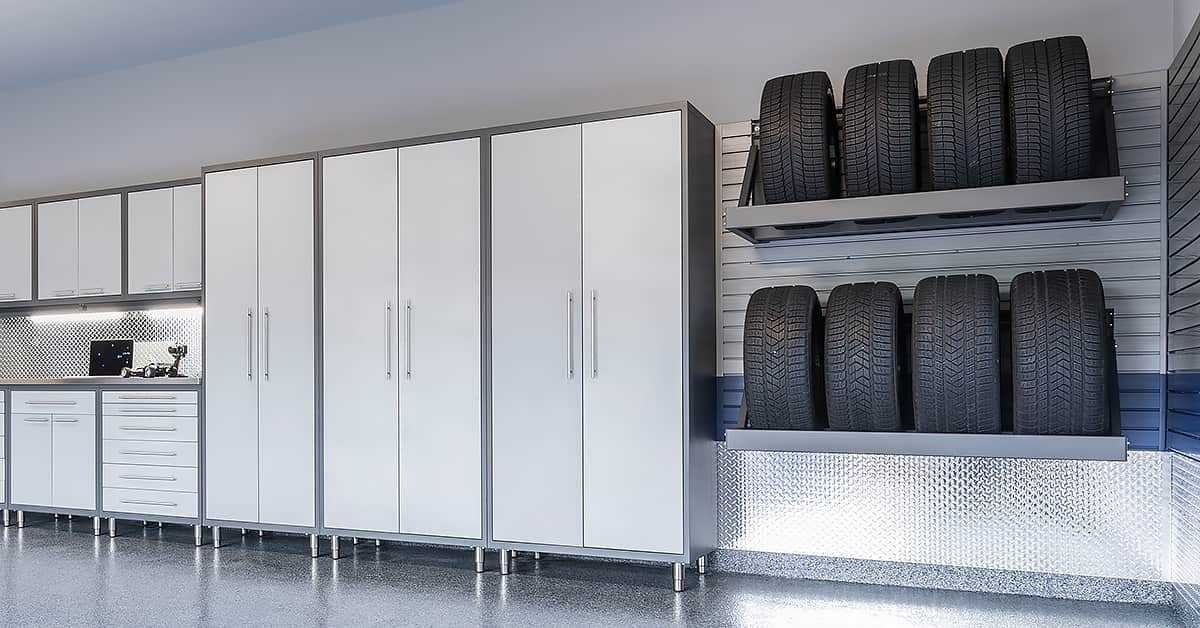Garage Flooring |
Garage Cabinetry |
Garage Makeover |
Wall Storage
7 smart reasons to complete your unfinished garage
Garages often get overlooked. Used as makeshift storage or parking spots, they tend to lack the polish and functionality of other spaces in your home. But leaving your garage unfinished is a missed opportunity to create something truly valuable. Let’s explore why completing your garage isn’t just a good idea; it’s a game-changer. 1. Transform wasted space into something purposeful Right now, your garage might feel like a dumping ground: a little of this, a little of that, with no clear focus. Finishing it changes the game. Imagine a dedicated spot for tools, a workspace where you can fix, build, or create, or even a neatly designed parking area where your car isn’t squeezed between bikes and storage bins. A finished garage gives your space a purpose. It works for you instead of against you, helping you reclaim control and turn unused square footage into something meaningful. 2. Simplify everyday living Does your garage add to your stress instead of reducing it? Maybe finding the extension cord means digging through piles of boxes, or the kids’ sports equipment is always scattered around, making it hard to pull in your car. Finishing your garage puts everything in its place. Storage systems like cabinets, slatwalls, and overhead racks make it easy to organize what you own. Tools are where you expect them, seasonal items are neatly stored, and parking feels seamless. Your mornings become less about frustration and more about efficiency. 3. Protect your investments Your car, bikes, tools, and other equipment represent a significant investment. An unfinished garage often leaves these items vulnerable, whether it’s extreme temperatures, moisture, or accidental damage caused by clutter. By finishing your garage, you’re not just creating a more harmoniously designed space, you’re adding functionality. Durable flooring enhances the look and feel of your garage, custom storage keeps everything off the floor and neatly organized, and a well-planned design helps maximize space and efficiency. 4. Expand your home’s functionality Do you ever find yourself wishing for an extra room? Finishing your garage can be the answer. Beyond parking, it can become a workshop for DIY projects, a home gym with space for weights and cardio equipment, or a creative corner for hobbies like painting or woodworking. Unlike other renovations, turning your garage into a usable space doesn’t require building new walls or adding onto your home. It’s about reimagining what’s already there. With the right design, your garage can adapt to your needs, giving you the flexibility to use it however you see fit. 5. Reduce seasonal stress Does putting up holiday decorations or switching out your gardening tools for snow shovels feel like an ordeal? Seasonal transitions can be a hassle when your garage is unorganized. Finishing your garage helps you manage the chaos. Overhead racks can store those bulky bins of decorations, while wall panels or custom shelving keep everything from sleds to garden hoses within reach. The result? Less stress when the seasons change and more time enjoying what matters. 6. Make your home stand out Your garage is the first thing people see when they pull into your driveway, yet it’s often the last thing we think to improve. An unfinished garage can make your home feel incomplete, while a finished one elevates its overall look and feel. Think clean lines, polished flooring, and cabinetry that blends function with style. Whether you’re welcoming guests or planning to sell your home in the future, a finished garage adds that “wow” factor that sets your home apart. 7. Create a space you actually want to be in An unfinished garage is often cold, dark, and unwelcoming. It’s the kind of place you enter only when you have to. But with the right upgrades, it can be so much more. Good lighting transforms how the space feels, climate control keeps it comfortable year-round, and sleek finishes make it inviting. Whether it’s spending time tinkering on a car, doing a workout, or even hosting gatherings with friends, a finished garage becomes a space you’re proud to use. Your next step If you’ve been living with an unfinished garage, it’s time to rethink its potential. Completing this space is about more than looks, it’s about creating a better way to live. From added storage and convenience to improved functionality and value, the benefits of finishing your garage are clear. What could your garage become? Let's make it happen! Please share this post if you found it useful. See also: Why Quality Matters in Garage Renovations? Why You Should Choose Insured Contractors for Your Home Renovation Projects? Why Floortex Makes Garages Great?









